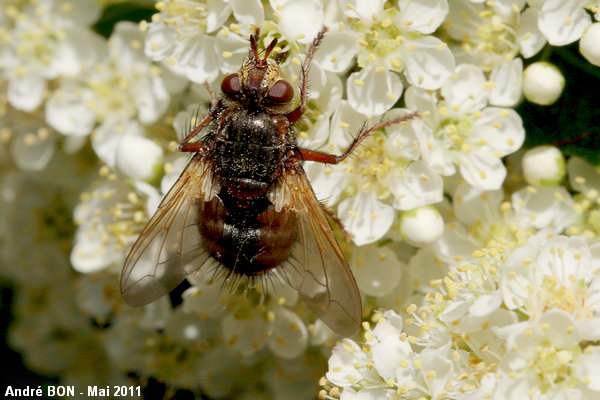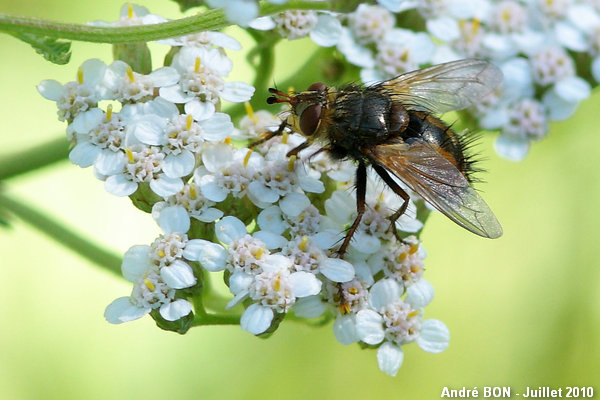


| Tachina fera (Linnaeus, 1761) |



|
|
Scientific name: Tachina fera (Linnaeus, 1761) Common name: French name: Tachinaire sauvage, Tachinaire des chenilles Order: Diptera Family: Tachinidae Wingspan : 10-16 mm. Biotope: Woodland areas, damp places. Waste lands, flower meadows. Geographic area: Europe as far as northern Scandinavia. Observation period : April to October. |
Tachina fera is a large fly with a hairy body, especially near the abdomen tip. The back of the head and the abdomen are russet brown. The abdomen shows a broad black dorsal band ending with a pointed shape. The fore leg tarsi and femora are yellowish. Tachina fera lays its eggs on the vegetation. The larvae penetrate into the body of caterpillars passing in their vicinity. They will become adults in two weeks after having progressively eaten the inside of the host caterpillar body. There is a possible confusion with Tachina magicornis. This last one has darkened fore leg 1 tarsi, dark brown or even black, and the black dorsal band is enlarged on segment 5, that's to say on the abdomen tip. Nowickia ferox has totally black legs. |
| [To know more about the Tachina fera] [Next picture] [Top] |

|
The fore legs' tarsi are quite visible on this picture. They pale colour enables to discard Tachina magicornis. |
| [To know more about the Tachina fera] [Next picture] [Previous picture] [Top] |

|
It does not seem to me that the tarsi are darkened. That's why I think this one is Tachina fera instead of Tachina magicornis. A confirmation by an expert would be welcome. |
| [To know more about the Tachina fera] [Previous picture] [Top] |

|
On this picture the fore leg tarsi are not darkened and the dorsal band ends with a pointed shape. These two criteria match the identification of Tachina fera. |